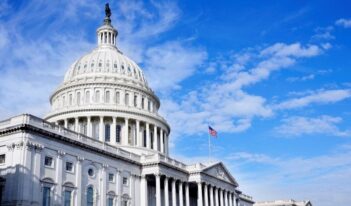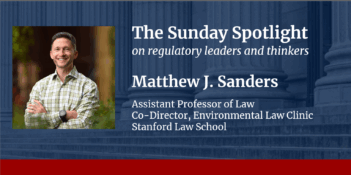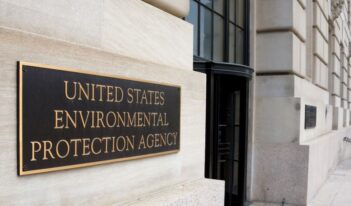
A proposed rule seeks to reverse recent changes to the procedures EPA uses to conduct risk assessments of toxic chemicals.
In its final months, the Biden Administration sought to update the government’s risk assessment processes focused on limiting exposure to dangerous chemicals, such as asbestos and formaldehyde. Just a year later, the Trump Administration aims to reverse those updates.
The U.S. Environmental Protection Agency (EPA) recently announced a proposed rule to revise its risk evaluation process for chemicals under the Toxic Substances Control Act (TSCA). This proposal, which the agency states is “deregulatory in nature,” would modify the methodology that dictates how EPA documents, manages, and eliminates unreasonable risks associated with these dangerous substances.
TSCA, passed by the U.S. Congress in 1976 and amended in 2016, is designed to protect humans and the environment from toxic chemicals. Under its 2016 amendments, this federal law requires EPA to establish a process for conducting risk assessments to determine whether a chemical presents an “unreasonable risk.” This determination is supposed to be made solely on the basis of scientific risk, not the cost to businesses or other non-risk factors. EPA can restrict—or even outright prohibit—the manufacturing, processing, or distributing of a chemical deemed to contain unreasonable risk.
Under the first Trump Administration, EPA issued a final rule in 2017 that initially established requirements for the agency’s risk evaluation process. This process was subsequently used to assess the risks posed by ten high-priority substances, including dangerous industrial solvents such as methylene chloride and trichloroethylene.
The EPA amended these risk assessment regulations in 2024, drawing lessons from those first risk assessments and litigation that challenged the 2017 rulemaking. The objective of the amendment was, in the Biden Administration’s view, increased conformity with TSCA. The modifications, as explained by the EPA at the time, were purportedly necessary to “keep pace with changing science” and better support public health and the environment.
The latest proposed rule—issued in September—is designed to “rescind or revise” many of those Biden-era modifications, according to the current EPA.
One key modification is illustrative. In 2024, EPA instituted a requirement that a single determination of unreasonable risk be made for the chemical as a whole. This allowed the agency to complete evaluations that captured “combined exposures across multiple conditions of use.” The agency in 2024 reasoned that this approach reflected a “plain reading” of TSCA and would allow for a more comprehensive evaluation of chemicals.
The proposed rule would return to making separate risk decisions for each way a chemical is used. EPA now argues that the 2024 final rule was “not consistent with the best reading of TSCA.” The agency claims that using individualized risk determinations for each condition of use would provide “greater clarity and transparency” to regulators, businesses, and the public.
In the 2024 final rule, EPA had also expanded the scope of the risk evaluations. EPA required all reasonably foreseeable “conditions of use” and “exposure routes” to be captured in the risk assessment, rather than focusing solely on the most significant concerns.
The proposed rule reverses this expansion, explaining that EPA has been granted the power to “exercise reasonable discretion” under TSCA. The agency now suggests that the 2024 final rule would have resulted in delayed risk assessments, hindered innovation, and harmed small businesses.
In addition to these risk assessment changes, the proposed rule would reinstate an assumption that workers handling toxic chemicals would always use the correct protective equipment and follow appropriate engineering and administrative controls. The 2024 final rule had removed this assumption because EPA argued it could “lead to an underestimation of the risk to workers.”
EPA’s newest proposed rule includes several other adjustments that scale back the 2024 final rule. For example, the proposed rule would remove the addition of the phrase “overburdened communities” from the definition of “potentially exposed and susceptible subpopulations.” The proposed rule would also lessen the burden on manufacturers requesting a risk evaluation by EPA.
The current EPA Administrator, Lee Zeldin, argues that the proposed modifications are necessary to support the U.S. economy while also remaining “grounded in the law and the science.” EPA also suggests that these modifications must be executed in light of two executive orders issued by President Donald J. Trump.
One of these executive orders calls for agency heads to review all regulations for “consistency with law and Administration policy.” In following this directive, EPA claims that the 2024 final rule is inconsistent with the U.S. Supreme Court’s decision in Loper Bright Enterprises v. Raimondo. The agency argues that the Court held in Loper Bright that courts should identify the single best reading of the statute without deferring to the agency’s interpretation. It claims that this view of Loper Bright makes the 2024 final rule impermissible. The 2024 final rule, however, mentions that EPA’s approach at that time was consistent with the “plain reading” of the statutory text.
Another executive order issued by President Trump committed the U.S. government to restoring a “gold standard for science.” The order claimed that confidence in scientists had “fallen significantly” and directed the U.S. government to take steps that would restore that trust. In response, EPA has incorporated into its recent proposed rule the definition of “weight of scientific evidence” from the order.



